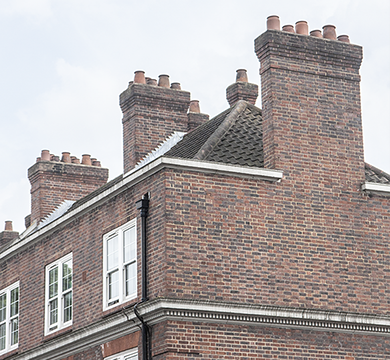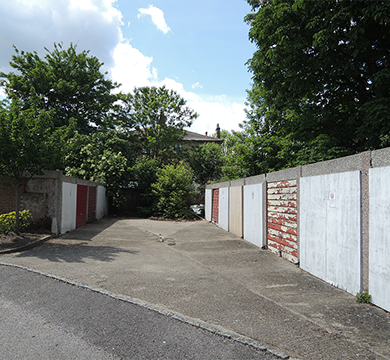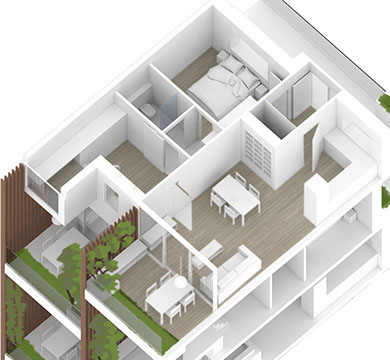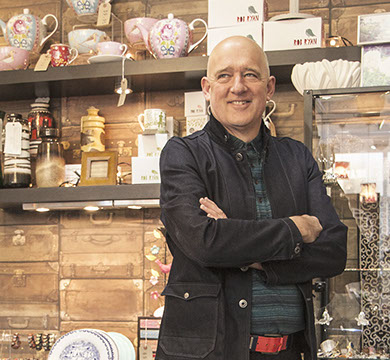





01
Context
Addressing and responding to a building’s place within the wider urban fabric allows us to design units that complement and enhance their surroundings.
02
Community
Understanding the desires and concerns of those affected is key to a project’s success. Done well, a design intervention adds value by helping to create resilient communities.
03
Constraints
Gap sites can be tricky, but exploiting their potential can also breathe new life into an area, adding value by reviving sites that would otherwise remain dormant.
04
Codes
Understanding design codes can mean the difference between designing a homogeneous house and a glowing home, especially on restrictive gap sites.
05
Character
Great design creates flexible homes with character. At LGA, we produce thoughtful designs that carefully consider residents’ needs and can easily accommodate different requirements.
06
Collaboration
Key to the delivery of a successful project is a collaborative approach from the outset, especially on challenging and complex gap site projects.
<
>
Insight
Gap Sight
Gap Sight
A design vision for infill sites
Foreword
A number of our projects aim to repair ‘gaps’ in the urban fabric, bringing fresh vitality to forgotten corners. We map out the ‘Six Cs’ of successful gap site housing development – principles that are also applicable to high street regeneration projects.
As a nation we are (massively) failing to build enough homes to meet demand. Since 2008, the number of new households created each year has exceeded the number of homes built. And the deficit is huge – at the moment, we are building about 140,000 new homes per year, but according to some estimates, we should be building nearly twice that. That’s a city the size of Newcastle, every year.
Such a daunting problem seems to demand radical solutions. With particular reference to the southeast, urban designer David Rudlin thinks the answer to is to “take a confident bite out of the greenbelt”. His view represents a return to the ‘new towns’ model that occupied architectural thinking in the 1960s.
Leading British architect Richard Rogers considers this “a ridiculous concept”, and severely premature in light of other opportunities. He advocates building on brownfield and exploiting infill sites – also known as gap sites. These small plots are found embedded in densely developed urban areas. They often contain derelict ancillary structures such as garages or redundant commercial and community buildings. Crucially, developing a gap site does not require demolishing existing homes.
Beyond simply providing more homes, Rogers believes that adding density in urban areas helps existing communities to flourish, while preserving metropolitan boundaries and surrounding countryside.
We tend to agree, and as a practice we are joyfully taking on housing and high street regeneration projects in gap sites next to, above – and sometimes below – buildings. In close collaboration with clients and local communities, we are bringing new life to neglected and derelict areas.
The 'Six Cs' of gap sites


03
Constraints
Gap sites can be tricky, but exploiting their potential can also breathe new life into an area, adding value by reviving sites that would otherwise remain dormant.
Our proposed development in Islington uses an awkward site that posed numerous spatial challenges. Our solutions include stepping the floor plans to allow light to penetrate deep into the building.
04
Codes
Understanding design codes can mean the difference between designing a homogeneous house and a glowing home, especially on restrictive gap sites.
Far from creating sterile, cookie-cutter houses, at LGA our in-depth understanding of housing design codes allows us to interpret and negotiate requirements in order to produce unique and desirable homes that people want to live in, such as for Pocket Living.

01
Context
Addressing and responding to a building’s place within the wider urban fabric allows us to design units that complement and enhance their surroundings.
On Peabody’s estate in Cleverly, two new low-rise buildings replace rows of derelict garages. Their sensitive design nods to the detailing of their 1920s neighbours, slotting into the site without disrupting the privacy and security of the wider estate.

05
Character
Great design creates flexible homes with character. At LGA, we produce thoughtful designs that carefully consider residents’ needs and can easily accommodate different requirements.
We explore how to make compact housing more attractive to expanding families, by offering flexibility through intelligent space design, creating a home that’s worth staying in town for.

02
Community
Understanding the desires and concerns of those affected is key to a project’s success. Done well, a design intervention adds value by helping to create resilient communities.
On Peabody’s Lee Green Estate we engaged creatively and energetically with the local community to win overwhelming support for 17 new, contemporary homes across three infill sites.

06
Collaboration
Key to the delivery of a successful project is a collaborative approach from the outset, especially on challenging and complex gap site projects.
Building the brief together with the client and development manager allows us to maximise the potential of a site, and with clear communication and imagination, projects can be delivered smoothly, both on time and on budget.
Related
SUBSCRIBE
Click below to subscribe to our newsletter or to manage your preferences
Subscribe to our newsletter
© 2020 Lyndon Goode Architects Ltd






